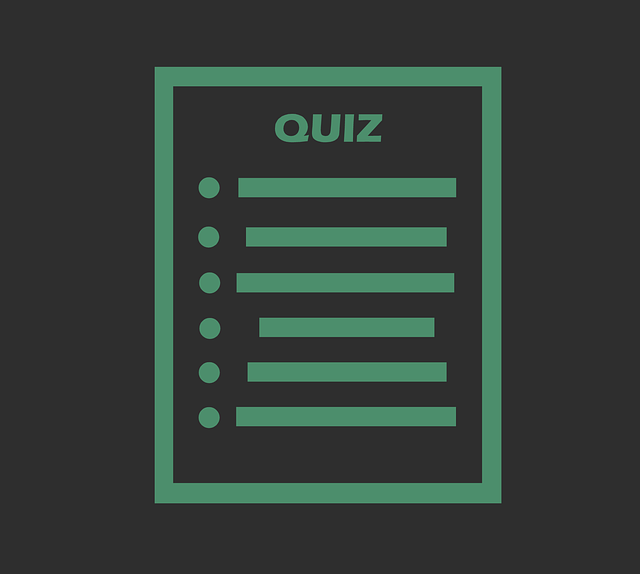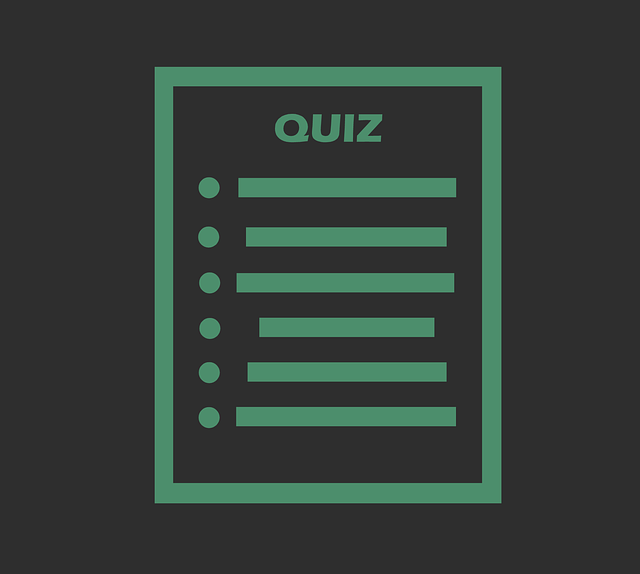In this blog you will find the correct answer of the Coursera quiz Global Financial Markets and Instruments Coursera Week 3 mixsaver always try to brings best blogs and best coupon codes
Week- 3
PRACTICE QUIZ
Equity Securities
1. You expect the price of FBG stock to be $69.77 per share a year from now. Its current market price is $60, and you expect it to pay a annual dividend of $1.75 per share a year from now. What is the stock’s expected dividend yield? State your answer as a percentage rate rounded off to two digits after the decimal point, i.e. ‘x.xx’
Enter answer here
|
2.92 |
2. Refer back to Question 1. What is your expected total return on FBG stock? State your answer as a percentage rate rounded to one digit after the decimal point, i.e ‘x.x’
Enter answer here
|
19.2 |
3. Which one of the following statements is true about the differences between debt and common stock?
- Debt is ownership in a firm, but equity is not.
- Creditors have voting power, while stockholders do not.
- Periodic payments made to either class of security are tax deductible for the issuer.
- Interest payments are promised, while dividend payments are not.
4. Two of the main indexes that equity investors keep track of are the Dow Jones Averages (DJIA) and the Standard & Poor’s Composite 500 (S&P 500). The difference between these two indexes is:
- The DJIA is a price weighted average of the stocks of 30 companies and (S&P 500) is a market value weighted index of 500 companies.
- The DJIA is more volatile than the Standard & Poor’s Composite 500 (S&P 500).
- None of the above.
5. Scubaland, Inc. is experiencing a period of rapid growth. Earnings and dividends per share are expected to grow at a rate of 18 percent during the next two years, 15 percent in the third year, and 6 percent thereafter. Yesterday, Scubaland paid a dividend of $1.15. If the required rate of return on the stock is 12 percent, what is the price of a share of the stock today? Round off your final answer to three digits after the decimal point. State your answer as ‘x.xxx’
Enter answer here
|
26.955 |
6. A firm’s preferred stock often has a dividend yield that is lower than its bonds because:
- Preferred stock generally carries a higher rating.
- Owners of preferred stock have a prior claim on the firm’s earnings.
- Owners of preferred stock have a prior claim on a firm’s assets in the event of liquidation.
- Corporations owning stock may exclude from income taxes most of the dividend income they receive.
7. Gemini Industries has just paid its annual dividend of $3 per share. Analysts expect the dividend to grow at a constant growth rate of 4% indefinitely. If the stock is currently trading at $54, what is the market’s required rate of return on this stock? Express your answer as a percentage rate rounded off to two digits after the decimal point, i.e. ‘x.xx’
Enter answer here
|
9.78 |
8. If GE stock is trading at $19.72 and the last quarterly dividend payment was $0.17 per share, what is GE’s annual dividend yield? Express your answer as a percentage rate rounded off to two digits after the decimal point, i.e. ‘x.xx’
Enter answer here
|
3.45 |
9. What is the value of a preferred stock that pays a fixed dividend of $2 per share if the discount rate is 8%? Round off your final answer to the nearest dollar.
Enter answer here
|
25 |
10. Suppose that the company XYZ has just won a major contract. This lucrative contract will enable it to increase the growth rate of its dividends from 5% to 6% without affecting the projected current dividend of $3.00 per share. If the current share price is $57.14, what will happen to the share price upon announcement of this good news?
- The price will jump by 6%.
- The price will jump by 1%.
- The price will increase to $62.28
- The price will increase to $70.59
Derivative securities
1. A derivative security is:
- A type of financial asset that is traded frequently in money markets.
- A type of fixed income instrument similar to bonds and commercial paper traded in capital markets.
- A type of financial asset whose value depends on the value of another underlying asset such as stock, commodity, index, reference rates.
2. Select which of these securities are examples of derivatives securities.
- A. Options and futures
- B. Swaps and forwards contracts
- C. Stocks and bonds
- A and B
3. The difference between derivatives traded on exchanges and in the over the counter (OTC) market is:
- A. On an exchange, an investor can obtain a derivative contract that is tailored to his needs.
- B. Exchnage-traded contracts are standardized and defined by the exchange, but in over the counter derivatives (OTC) contracts are customized and transactions costs are higher.
- C. In exchange traded markets there is no counterparty risk since there exists a clearinghouse.
- B and C.
4. Which of the following positions do you think would be the most risky transaction to take in the stock index option markets if the stock market is expected to increase substantially after you complete the transaction?
- A short call option
- A short put option
- A long call option
- A long put option
5. Suppose RIO stock has both currently call and put options traded. What would your profit at the expiration date be if you buy the 3-month call option with an exercise price of $60 for $4 and at the same time buy the 3-month put option with the same exercise price for $6 today if the RIO stock trades for $48 in three months?
Enter answer here
|
2 |
6. The main difference between a futures and a forward contract is:
- A. Forward contracts are traded over the counter and are customized, but futures are standardized contracts and are traded on organized exchanges.
- B. Future contracts can take only financial assets as the underlying asset.
- None of the above.
- A and B.
7. Which of these options on the same stock should sell at a greater price?
- A 6-month call option with an exercise price of $40
- A 6-month call option with an exercise price of $35
8. Suppose that a trader enters into a long corn futures position for 5000 bushels with a delivery date on December 2017 and a future price of $3.902 per bushel. What is the payoff to this position if on the delivery date, the spot price of corn is $4.0995 per bushel? Round off your final answer to the nearest dollar.
Enter answer here
|
988 |
9. Assuming all other relevant features of the stocks and options are identical, which of these options should sell at a lower price?
- A put option on a stock with a market price of $50
- A put option on a stock with a market price of $60
10. You are a portfolio manager who uses options positions to custom the risk profile of your clients. Your portfolio’s performance to date is up 16%. Your client’s objective is to earn at least 15%. You expect that there is a good chance of large losses between now and the end of the year. What strategy is best given your client’s objective?
- Long put options
- Short call options
- Long call options
11. Suppose you will receive your bonus next month. You hope to invest it in long-term corporate bonds. You believe that bonds are currently selling at quite attractive yields How would you use financial futures to hedge your risk?
- Go long in bond futures
- Go short in bond futures
12. Suppose you have just received 10,000 shares of your company stock as part of your compensation package. The stock currently sells $30 a share. You would like to defer selling the stock until the next tax year. In January, however, you will have to liquidate your holdings in order to provide a down payment on your new house. You are therefore worried about the price risk associated with keeping your shares of stock. If the value of your stock holdings fall below $250,000, your ability to come up with the necessary down payment would be jeopardized. On the other hand, if the stock value rises to $350,000, then you might be able to maintain a small cash reserve even after making your down payment. Which of these investment strategies would you choose?
- Writing January call options on your company shares with an exercise price $35. These are currently selling for $3 each.
- Buying put options with an exercise price of $25. These options are also selling for $3 each.
- Establishing a zero-cost collar position by writing the January calls and buying the January puts.
13. You have a client who believes that the shares of MexCon, currently trading at $48 per share, could move significantly in either direction in response to an expected court ruling involving the company. Your client currently owns no MexCon shares but asks you for advice to implement a strangle strategy to profit from the possible price movement. A strangle is a portfolio of a put and a call with a higher exercise price but with the same expiration date. Currently, MexCon stock has a 3-month call option with an exercise price of $50 selling for $4, and a 3-month put option with an exercise price of $45 selling for $3. Which of the two strategies would you recommend your client?
- A long strangle strategy
- A short strangle strategy
14. Suppose you are an oil distributor planning to sell 100,00 barrels of oil eight months from now. You would like to hedge against a possible decline in oil prices. Which position would you take?
- A short hedge taking a short futures position
- A long hedge taking a long futures position
15. Why does a speculator who wants to bet on the direction of the price of an underlying asset buy a futures contract instead of buying the underlying asset itself?
- A. Futures contracts require only a fraction of the value to be deposited compared to the value of the asset underlying the contract.
- B. Speculators are attracted to futures because the futures market appears more sophisticated.
- C. Speculators are not allowed to trade in the underlying asset.
- D. Transaction costs in the futures markets are far smaller.
- A and D
Module 3: Financial assets – Equities and derivatives
1. Earnings and dividends per share at G3-Biz Inc. are expected to grow at a rate of 18 percent over the next two years, then at 15 percent in the third year, and then at 6 percent thereafter. G3- Biz just paid a dividend of $1.15. If the required rate of return on the stock is 12 percent, what is the price of a share of G3-Biz stock today? Round off to two decimal points. (i.e. “x.xx”)
Enter answer here
|
26.95 |
2. Suppose that the company XYZ is going to pay a dividend of $1.50 per share next year, and the dividend is expected to grow by 10% forever. If investors require a 13%, what should the value of XYZ’s stock be?
- 55
- 50
- 62
- 65
3. Suppose that the stock of the company CFAA is currently trading on April 15 at a price of $70. A call option with a strike price of $70 and an expiration date on October 15 is trading at $4. What is your profit if the stock price at expiration date is $80? Remember that each option contract is for 100 shares.
Enter answer here
|
600 |
4. Suppose that a trader enters into a long futures position for 1000 oil barrels with a delivery date on December 2016 and a future price of $40 per barrel. Suppose that on delivery date, the spot price of oil is $45 per barrel. What is the payoff to the long position?
Enter answer here
|
5000 |
5. Suppose your research shows that technology stocks currently provide an expected rate of return 12%. BMI, a large computer company, is expected to pay a dividend of $2 per share at the end of the year. If the stock is currently selling at $48 per share, what is the market’s expectation of growth at BMI?
- 6.53%
- 7.83%
- 4.17%
- None of the above
6. An investor purchases a stock for $28 and a put on the stock for $0.40 with a strike price of $24. She also sells a call on the same underlying stock for $0.40 with a strike price of $30 and with the same expiration date. What is the value of her portfolio, net of the proceeds from the options, if the stock price ends up at $35 on the expiration date?
Enter answer here
7. Which of the following is correct about the over-the-counter markets?
- a. The counterparty risk is eliminated.
- b. There is no clearing house.
- c. Futures are traded in OTC markets.
- d. Both b and c are correct.
8. A spread is a combination of two or more call options on the same stock with differing exercise prices or times to maturity. Some options are bought, and others are sold. Consider a bullish spread option strategy where you buy a call option with a $35 exercise price priced at $4 and sell a call option with a $50 exercise price priced at $2.50. If the price of the underlying stock increases to $60 at expiration and each option is exercised on the expiration date, what is your net profit?
- 8.50
- 13.50
- 16.50
- 23.50
9. Suppose you are a U.S. investor who is harmed when the dollar depreciates. Specifically, suppose that your profits decrease by $200,000 for every $0.05 rise in the dollar/pound exchange rate. If the pound futures contract on the Chicago Mercantile Exchange calls for delivery of 62,500 pounds, how many contacts will you need to enter to hedge? Will you take the long or the short side of the contracts?
- 64 contracts short
- 64 contracts long
- 32 contracts short
- 32 contracts long
10. You know that many corporate bonds are issued with call provisions that allow the issuer to buy bonds back from the bondholders at some time in the future at a specified call price. Which of the following is correct?
- This is similar to the bond issuer holding a call option with an exercise price equal to the price at which the bond can be repurchased.
- This is similar to the bondholder owning a call option with an exercise price equal to the price at which the bond can be repurchased.
- This is similar to the bond issuer holding a put option with an exercise price equal to the price at which the bond can be repurchased.
- This is similar to the bondholder owning a put option with an exercise price equal to the price at which the bond can be repurchased.
Important Links:
- Global Financial Markets and Instruments Coursera Week 1
- Global Financial Markets and Instruments Coursera Week 2
- Global Financial Markets and Instruments Coursera Week 4





